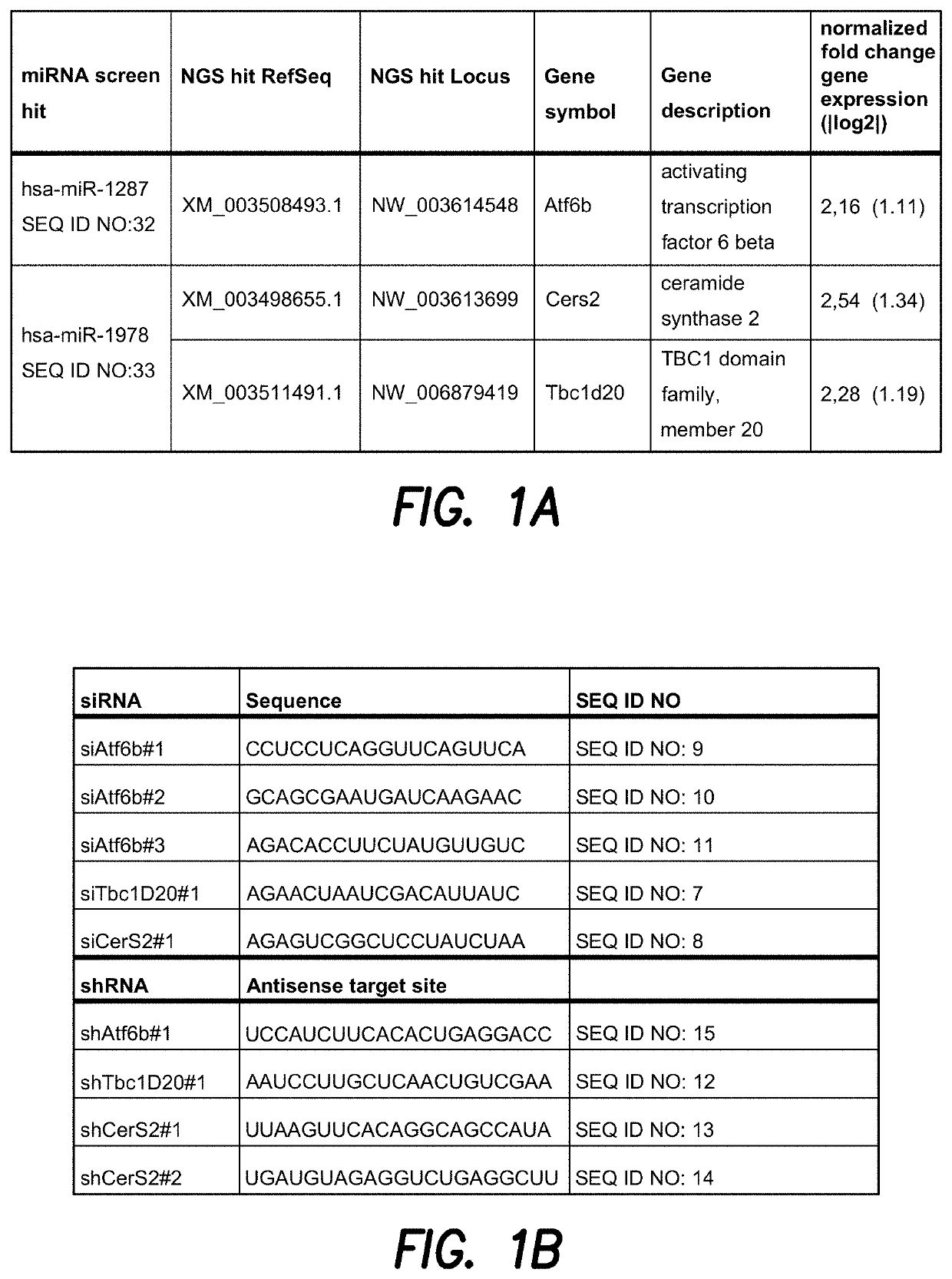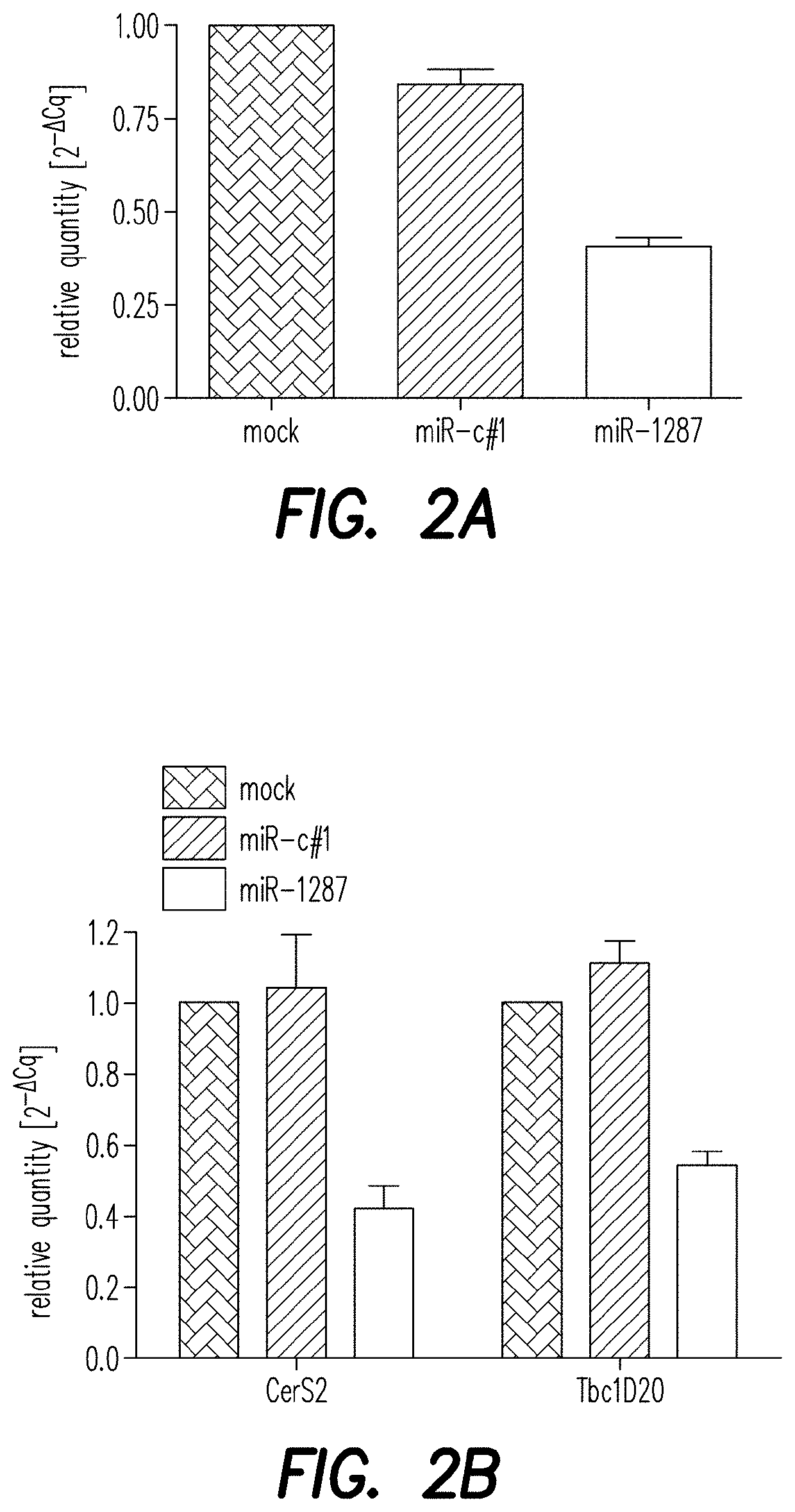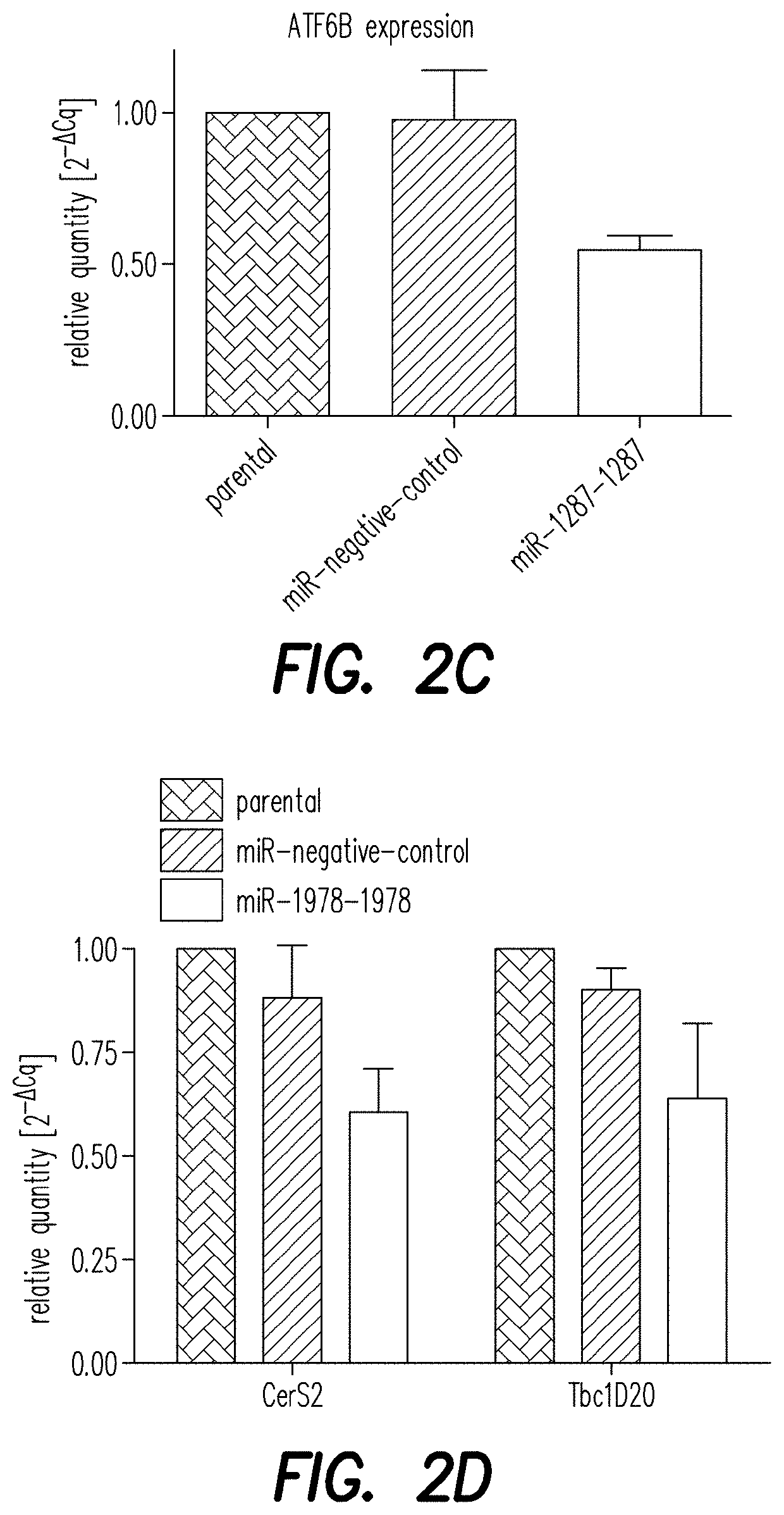Mammalian cells for producing a secreted protein
a technology of secreted protein and mammalian cells, which is applied in the direction of acyltransferases, peptides, enzymology, etc., can solve the problems of complex nature of intracellular regulation circuits, inconvenient targeting of one gene or protein, and inconvenient regulation of some of those genes, so as to reduce cers2 and tbc1d20 activity, increase the production of secreted proteins, and reduce atf6
- Summary
- Abstract
- Description
- Claims
- Application Information
AI Technical Summary
Benefits of technology
Problems solved by technology
Method used
Image
Examples
example 1
tome Profiling by Next Generation Sequencing (NGS)
[0187]CHO cells are commonly used for the production of therapeutic proteins. Genetic engineering approaches have attempted to optimize the productivity of these cells by expressing specific cDNAs. Naturally existing non-coding RNAs regulate cell fate by modulating the expression of a whole set of target proteins, which may possibly result in a super-secretory phenotype when over-expressed in CHO producer cells. To exploit the power of non-coding RNAs and to identify those that positively affect secretion of a heterologous therapeutic protein, CHO-mAb1 cells were transfected with a library of human microRNAs. Based on this genome-wide functional microRNA (miRNA) screen to identify miRNAs that enhance the antibody productivity of CHO-mAb1 cells, the two miRNA screen hits miR-1287 (SEQ ID NO: 32) and miR-1978 (SEQ ID NO: 33) with strong effects on antibody production and specific productivity were chosen for further analysis (FIG. 1). ...
example 2
NGS Hits are Validated by qPCR Analysis
[0189]To validate the NGS hits ATF6B and CERS2 / TBC1D20 as direct target genes of the miRNAs miR-1287 and miR-1978, respectively, their expression level was analyzed by qPCR. CHO-mAb1 cells were transfected with each of the two microRNAs as described above. One day after transfection, RNA was extracted to measure levels of mRNA of ATF6B, CERS2 or TBC1D20 by qPCR analysis (FIGS. 2A and B) as described above. Relative expression was calculated by normalizing to the reference gene beta actin. Additionally, changes in the expression level of the genes of interest were analyzed by qPCR in CHO-mAb1 cells stably overexpressing the respective miRNAs. These cell pools were generated by transfecting CHO-mAb1 cells with a GFP-containing expression vector further encoding miR-1287 or miR-1978 (pcDNA6.2-GW / emGFP-miR-1287-1287 and pcDNA6.2-GW / emGFP-miR-1978-1978) (FIGS. 2C and D). Both, CHO-mAb1 cells transiently and stably expressing miR-1287 showed a reduce...
example 3
siRNA Mediated Knockdown of ATF6B, CERS2 and TBC1D20
[0190]Expression of miR-1287 and miR-1978 strongly improved the specific productivity of a recombinant antibody expressing CHO cell line (CHO-mAb1). To investigate if the depletion of the validated miR-1287 target gene ATF6B and the validated miR-1978 targets CERS2 and TBC1D20 also positively affects the specific productivity of recombinant antibody producing CHO cells, CHO-mAb1 cells were transfected with siRNAs specific for the respective target mRNAs. Three independent siRNAs were used for downregulation of ATF6B and two siRNAs for CERS2 and TBC1D20, respectively. One day after transfection RNA was extracted and mRNA levels of ATF6B, CERS2 and TBC1D20 were quantified by qPCR analysis. Relative expression was calculated by normalizing to the reference gene beta actin (FIG. 3). CHO-mAb1 cells transiently transfected with siRNAs specific for ATF6B had strongly reduced levels of ATF6B mRNA compared to untransfected control cells (an...
PUM
| Property | Measurement | Unit |
|---|---|---|
| concentration | aaaaa | aaaaa |
| concentration | aaaaa | aaaaa |
| pH | aaaaa | aaaaa |
Abstract
Description
Claims
Application Information
 Login to View More
Login to View More - R&D
- Intellectual Property
- Life Sciences
- Materials
- Tech Scout
- Unparalleled Data Quality
- Higher Quality Content
- 60% Fewer Hallucinations
Browse by: Latest US Patents, China's latest patents, Technical Efficacy Thesaurus, Application Domain, Technology Topic, Popular Technical Reports.
© 2025 PatSnap. All rights reserved.Legal|Privacy policy|Modern Slavery Act Transparency Statement|Sitemap|About US| Contact US: help@patsnap.com



